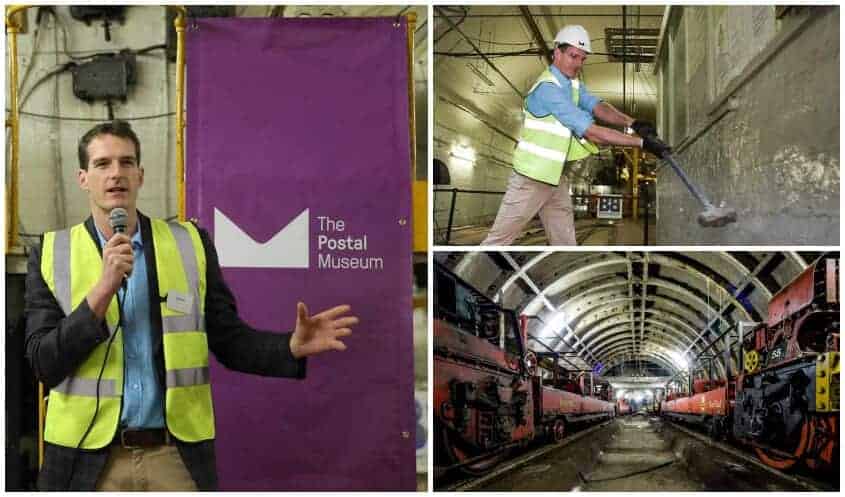Opening in early 2017, the museum in Clerkenwell, London, reveals stories from five centuries of Britain’s remarkable, and often curious, social and communications history through the eyes of one of its most iconic services.
The Postal Museum
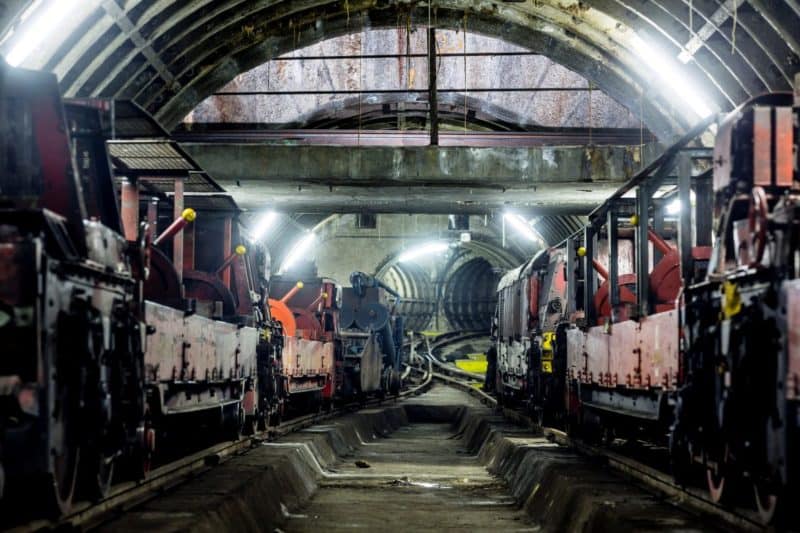
The Postal Museum is the home of Mail Rail – a brand new, and truly unique attraction transporting visitors back in time through the disused miniature tunnels of the world’s first driverless, electric railway. Through an immersive ride and interactive exhibitions, Mail Rail will take visitors on a journey deep under London’s streets to explore this engineering marvel and the innovation of the postal service as it strove to keep us all in touch.
5 Interactive Zones
The Postal Museum itself will deliver five interactive zones, leading visitors through five centuries of world-class curiosities, treasures and artefacts that provide a different viewpoint, and an additional piece in the jigsaw of many famous historical periods and events.
Walking through the zones, visitors will explore how the postal service’s innovation and ingenuity changed the way we communicate forever, and paved the way for the instant, digital communications of today. At the heart of this are the people who worked for, and whose lives were changed by, this indispensable service since its introduction in the 1500s.
Zone 1 – The Royal Mail
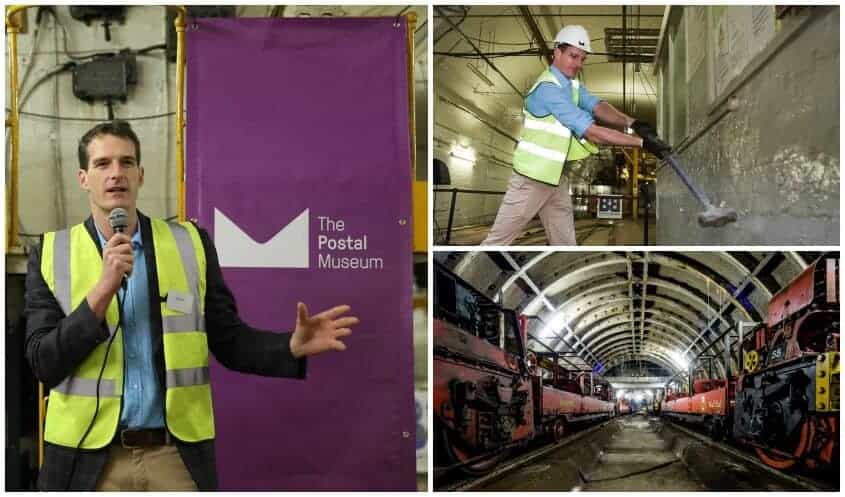
The first zone – ‘The Royal Mail’ – sees a horse-drawn mail coach in iconic pillar box red placed at the centre of a space that tells the narrative of the postal service’s earliest days, including the battle – and weapons needed – to defend the mail from highwaymen, pirates, and even a lioness.
Zone 2 – Mail for Everyone
The second zone – ‘Mail for Everyone’ – follows the growth of the Post Office in the 19th Century, displaying a priceless sheet of the renowned rare stamp, The Penny Black, representing huge social change that made it affordable for everyone to communicate over long distance for the first time in history.
Zone 3 – Post Office in Conflict
Zone three, the ‘Post Office in Conflict’, reveals the story of the Post Office salvage squad, who braved the Blitz to save mail from bombed post offices and pillar boxes, and the heroic actions of Sergeant Alfred Knight – a member of the Post Office’s own regiment, the Post Office Rifles – who became the battalion’s only Victoria Cross recipient in 1917.
Zone 4 – Designs on Delivery
In the fourth zone, ‘Designs on Delivery’, the focus is on the mail’s historical connections with art and design, from the revolutionary work of its marketing department in the 1930s to the original 1963 plaster cast that provided the iconic portrait of Queen Elizabeth II we still see on stamps today.
Zone 5 – Communication and Change

The fifth and final zone, ‘Communication and Change’, will meander through the mists of time, to reveal what the postal service meant to those it served, and how it has changed over time. Among the objects on display will be an original ‘Post Bus’, used to deliver mail to remote and rural areas, as well as providing a vital means of transport to locals at the same time.
In addition to the galleries, a dedicated learning space and a family play zone, especially for children, will also be included in the ambitious scheme.
Museum Archives
For an even more in-depth experience, the Museum’s extensive archives, which contain two and a half miles of shelving housing countless, priceless artefacts, will also be open to visitors through a new purpose-built repository and research facility.
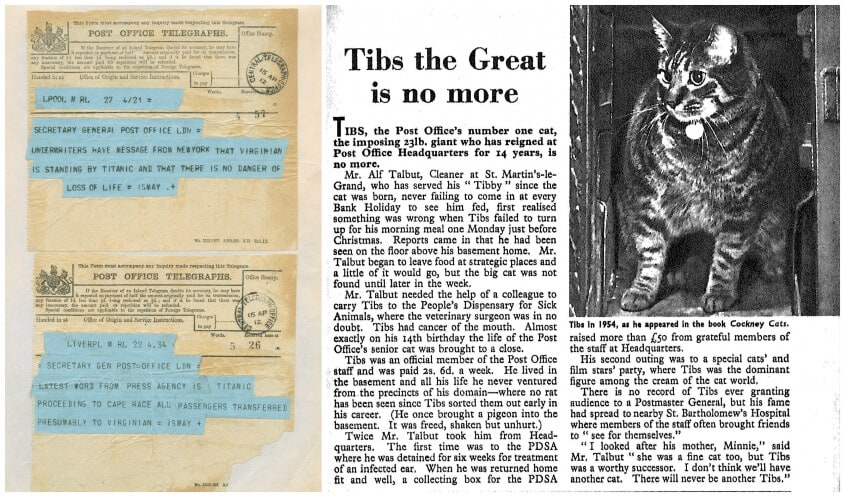
At a total cost of £26 million, raised through fundraising, the Museum is expecting 186,000 visitors and 10,000 school visits in its first full year alone.
Adrian Steel, Director of The Postal Museum, comments
“We’ve existed as The British Postal Museum & Archive since 2004, with a vision to bring our curious and extraordinary stories to a mass audience. Our new site, new name and the opening up of Mail Rail mark a new chapter in our history.
“Our Museum will offer something for everyone, including a family play zone, interactive galleries and exhibitions, state-of-the-art academic research facilities, and Mail Rail – tunnels that were so hidden they were used to protect the Rosetta Stone during the First World War.
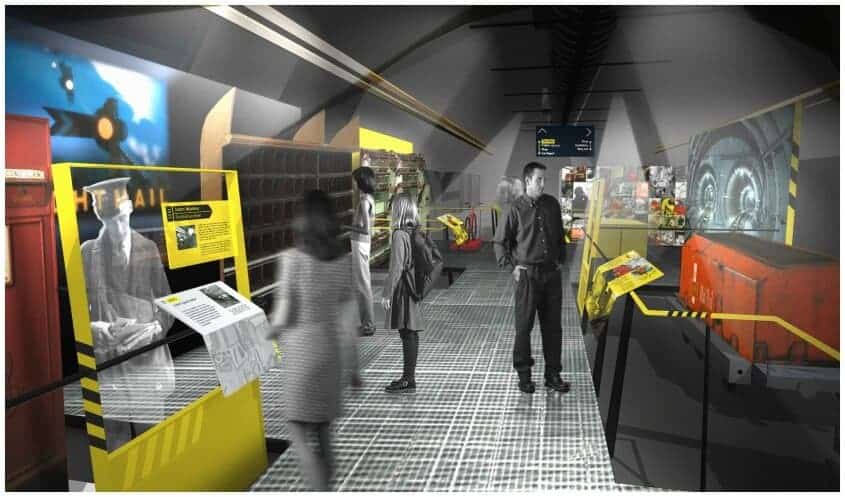
“Our archives contain so many great stories – from the fact that the Post Office used to officially employ cats (they even had pensions and employee numbers!), to artefacts that evidence some of the greatest historical events of our time, such as the fate of the Titanic and the golden age of Victorian innovation and social change.
“It’s fantastic to have a brand new site – a shop window – to display all of these amazing items that piece together the social history of Britain.”
The Postal Museum has been generously supported by many organisations and individuals, including Royal Mail, Post Office and Heritage Lottery Fund.

